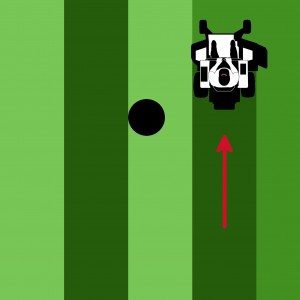Mowing heights for perfect lawn striping
A taller mowing height allows the grass to bend easier and enhances the striping effect. The general rule of thumb is to mow between 2.5 and 3.5 inches for best results. While it's possible to stripe warm-season grasses like Bermuda and St. Augustine, the plants are rigid and do not bend as easily. In addition, these species are typically maintained at shorter heights, which also makes striping more difficult.
Cool-season varieties like fescue and bluegrass generally provide the most dramatic lawn striping patterns. These plants bend easier and are healthier overall when mowed taller.
Lawn striping patterns, terrain and obstacles
Mow a one-mower-width perimeter first, then mow alternating directions across the lawn to create the striping pattern. Pick a stationary object in the distance and fix your eyes on it as you mow. This will help you keep the stripes straight across the lawn. Overlap each pass -- a good rule of thumb is 10 percent (example: 6" overlap for 61" deck) -- so you don't leave any uncut strips.
Mow around obstacles on the uncut side so that the next pass will cover the turn and maintain the overall pattern.
.

Switch the mowing pattern regularly to prevent the grass from "learning" to grow a certain way. This is hard on the plant and makes changing the pattern harder in the future. Not only that, but some patterns will work better than others for a particular landscape. Don't be afraid to get creative to see what lawn striping patterns make your yard the talk of the neighborhood.